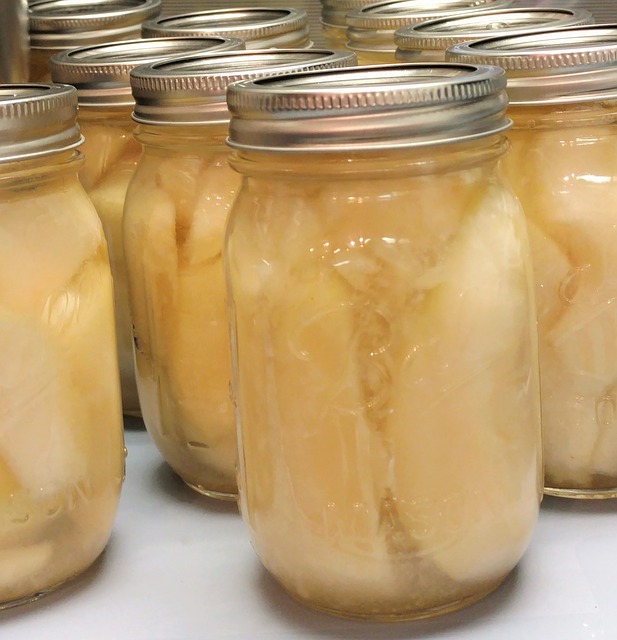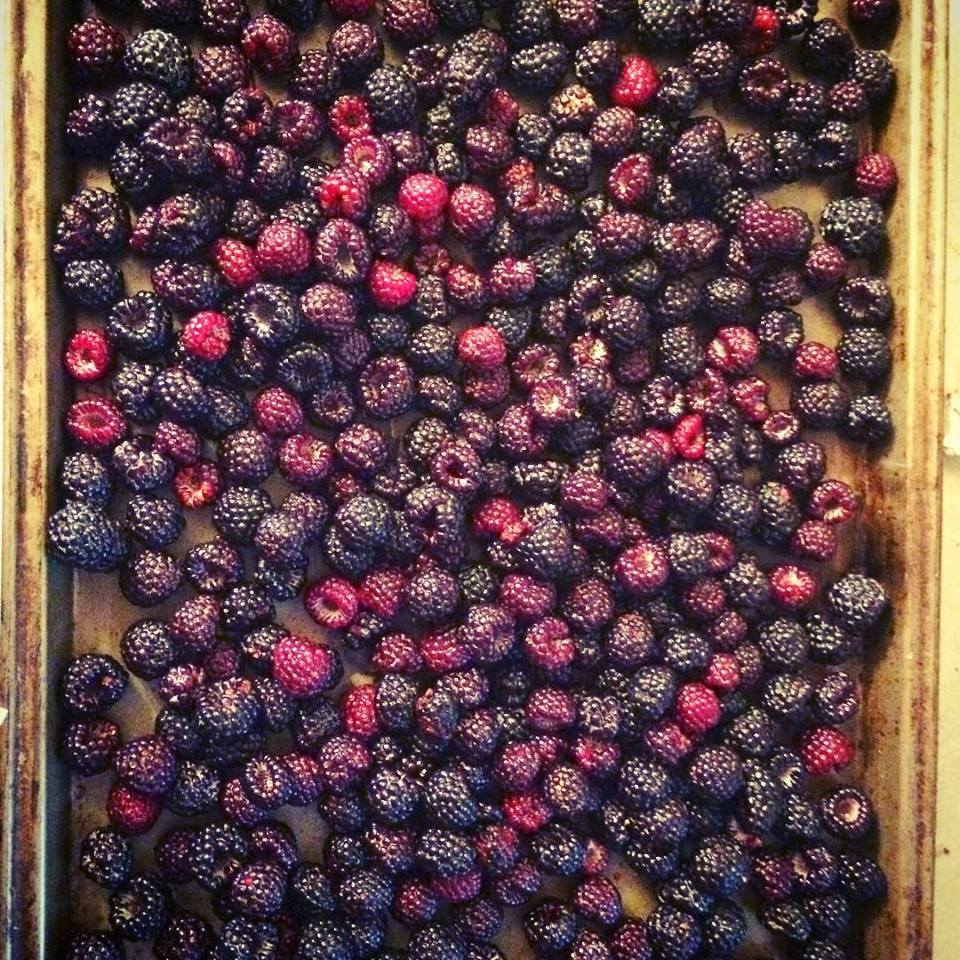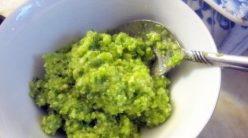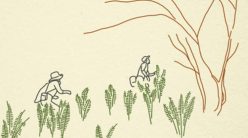Since next to nothing is fresh in the garden or the wild in winter in this part of the country, this is the time we rely on the root cellar and pantry. Canned, dried, frozen and root cellar foods are all staples for winter cooking for our family, including lots of wild foods we foraged in warmer months.
We put up wild foods all year, but we really put a lot up of specific foraged foods in several months — lots of wild asparagus in May, lots of black raspberries in July, lots of elderberries in August, and lots of apples and pears in September.
Throughout the rest of the growing season, we’re also drying, canning, freezing, dehydrating and otherwise putting up fresh wild and garden foods, too, so that later in the year we can enjoy them.
Then, deep in winter’s months here in Minnesota, we enjoy the fruits of our labors — literally!
Whether it’s stir fries from wild asparagus we gathered last spring, smoothies made with frozen mulberries and black raspberries, or applesauce and canned pears from fruit trees in area parks and neighborhoods, it’s a wonderful feeling to make use of foods we foraged, grew and gathered in warmer days.

Some of the preserved wild and foraged foods that we’re eating a lot of right now include:
- Frozen wild asparagus
- Canned pears

- Elderberry baked goods (with canned elderberry pie filling and frozen elderberries)
- Elderberry medicinal remedies (with dried elderberries)
- Elderflower tea and tinctures (with dried elder flowers)
- Canned applesauce
- Frozen chopped apples in baked goods
- Dried ramps as seasoning
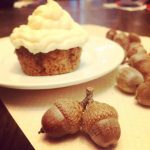
- Frozen chicken of the woods mushrooms
- Baked goods with frozen gooseberries and other frozen wild fruits
- Smoothies with frozen black raspberries and mulberries
- Wild grape, plum, elderflower and elderberry jams and jellies
- Elderberry lemonade with canned elderberry juice
- Acorn flour crackers, breads, pie crusts, etc.
- Hot racahout (like acorn hot chocolate)
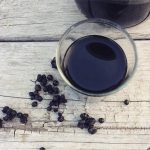
- Wild wines like elderberry and mixed fruit
- Nettle tea
- Wild plum syrup on pancakes and ice cream
- Wild liqueurs like elderberry schnapps, elderflower liqueur, gooseberry liqueur and choke cherry brandy
- Cobblers with frozen black raspberries and other fruits
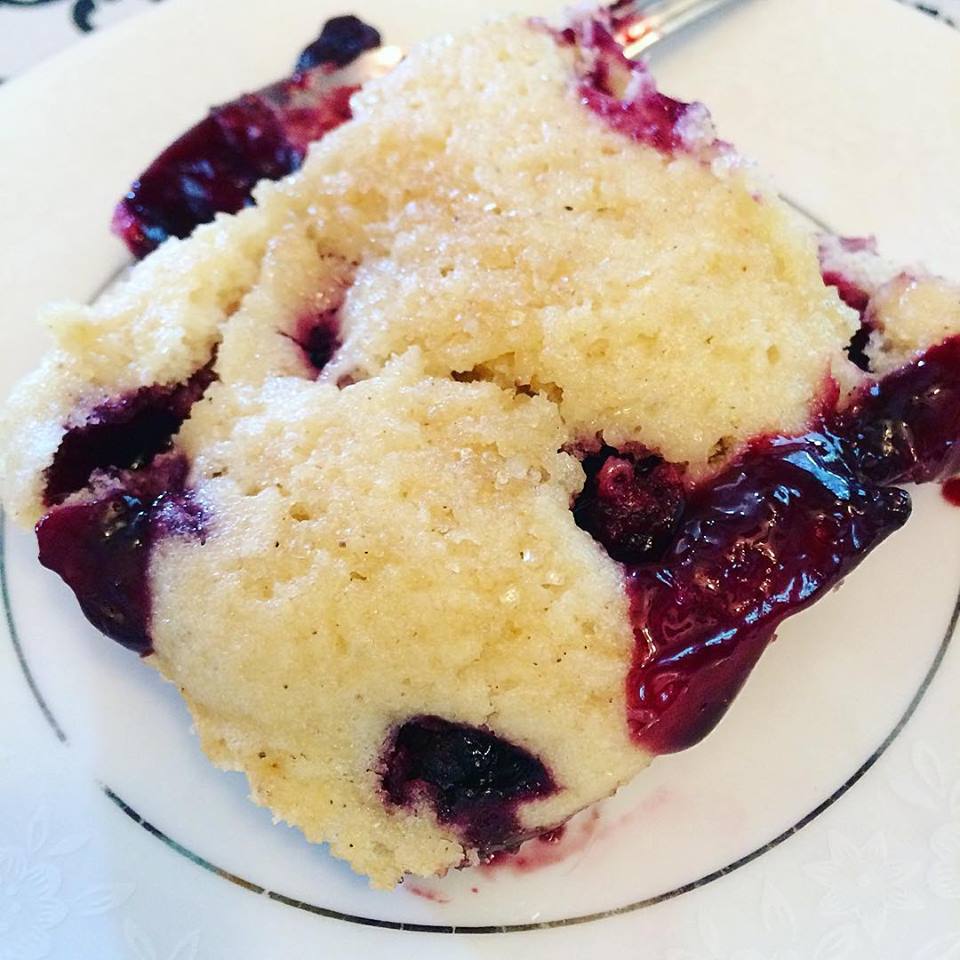
Some of the home grown and locally purchased foods we’re eating a lot of right now include:
- Frozen pumpkin puree in pies, breads and other baked goods
- Frozen red, green and jalapeno peppers in stir fries and frittatas
- Frozen corn on the cob and sweet corn
- Elderflower rhubarb jam
- Baked goods with frozen rhubarb
- Chocolate mint liqueur and other liqueurs made with goodies from the garden
- Canned salsa and spaghetti sauce
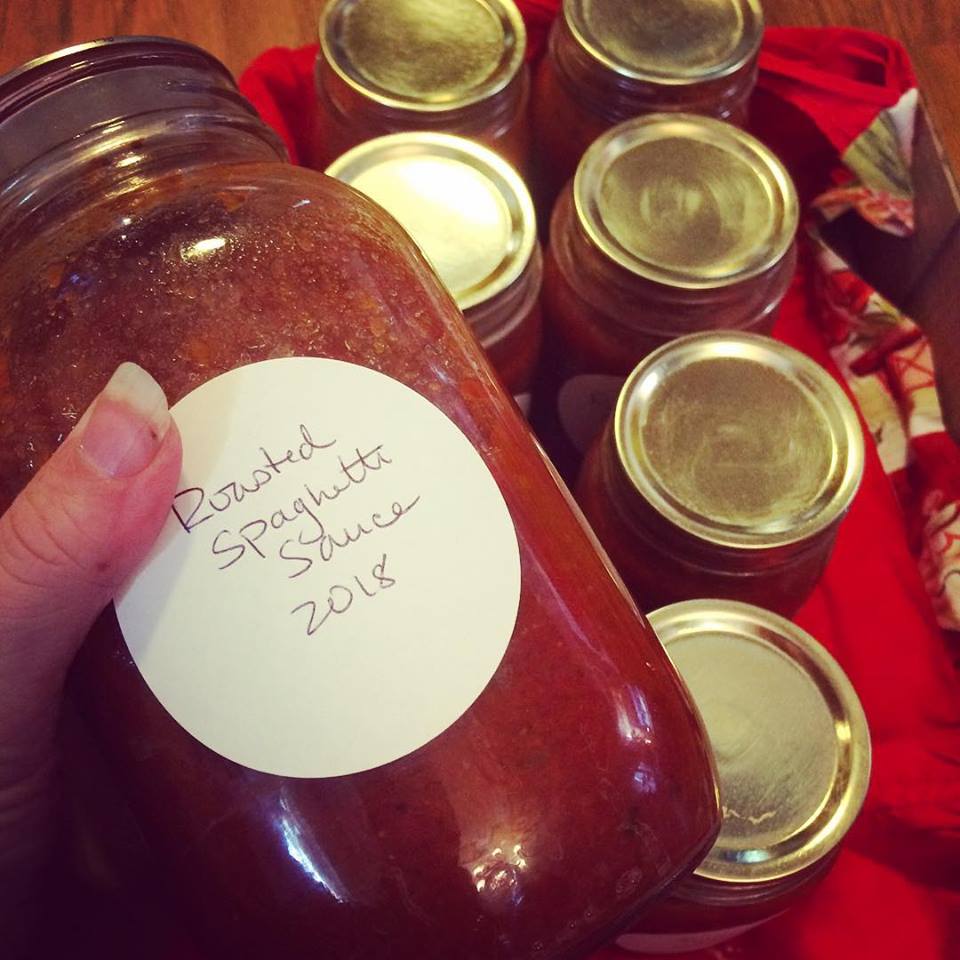
I would like to have a bigger garden and put up more things from our garden every year, but the truth is that with 5 kids and a very busy life, our garden produces enough to keep up eating healthy in season with a little extra of these things for the winter time. One thing I love about foraging is that nature takes care of the work, time and space of growing the goodies, and we just harvest it. But someday I hope to expand our garden to produce a lot more of what we eat all year.
Luckily, foraging and buying from local farm families provides us with a bounty of healthy foods for free or nearly free that we can put up and enjoy all winter. We average 300 to 400 pounds of wild foods that we forage every year. That goes a long way with a big family on a tight budget, and gives us a great variety of wonderful healthy foods that we can put to use in all different ways.
One bonus of doing lots of baking and soup making this time of year is that it also heats up the house!
Do you put up foods for the winter? What’s in your pantry or freezers?
Please follow and like us:
